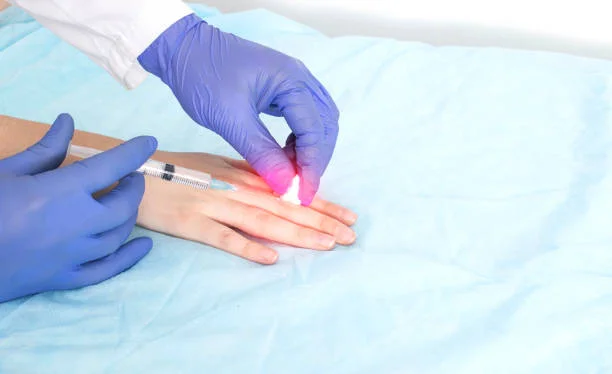That small, moveable lump under your skin that’s been bothering you isn’t going to disappear on its own. Epidermoid cysts are incredibly common – about 20% of people develop at least one during their lifetime – but they require proper medical attention for safe removal. While they’re usually harmless, trying to handle them yourself or waiting too long can lead to infection, scarring, or other complications. Book epidermoid cysts removal now with a qualified dermatologist or surgeon to ensure the best outcome and prevent future problems.
Understanding What Epidermoid Cysts Actually Are
Epidermoid cysts form when skin cells that should shed naturally get trapped under the skin instead. Think of it like a small pouch that fills up with keratin – the same protein that makes up your hair and nails. These cysts feel like firm, round bumps that move slightly when you press on them, and they often have a small dark spot in the center.
The location matters when it comes to removal complexity. Cysts on the face, neck, or areas that get frequent friction tend to be more problematic and should be addressed sooner rather than later. Back and shoulder cysts are common too, especially in people who sweat a lot or wear tight clothing regularly.
Most epidermoid cysts grow slowly over months or years. They’re not cancerous, but they can become infected if bacteria gets inside through the central opening. Once infected, they become red, swollen, and painful, which makes removal more complicated and increases the risk of scarring.
Why Professional Removal Beats DIY Attempts
The internet is full of videos showing people squeezing or cutting their own cysts, but this is genuinely risky. The cyst wall – called the capsule – needs to be completely removed or the cyst will almost certainly grow back. Partial removal through squeezing just empties the contents temporarily while leaving the structure intact.
Attempting removal at home also significantly increases infection risk. The tools aren’t sterile, the environment isn’t controlled, and most people don’t understand proper wound care. I’ve seen too many cases where DIY attempts resulted in serious infections that required antibiotics and left permanent scarring.
Professional removal is typically done under local anesthesia, so there’s minimal discomfort. The entire procedure usually takes 15-30 minutes, depending on the cyst size and location. The complete capsule removal means recurrence rates are very low – less than 5% when done properly.
Different Removal Techniques and When They’re Used
Simple excision is the most common method. The surgeon makes a small incision, removes the entire cyst and its capsule, then closes the wound with stitches. This works well for most cysts and has the lowest recurrence rate. The downside is a small linear scar, but proper technique usually results in minimal scarring that fades significantly over time.
Minimal excision techniques involve making a smaller incision and removing the cyst contents first, then carefully extracting the collapsed capsule. This reduces scarring but requires more skill to ensure complete capsule removal. It’s often used for cysts in cosmetically sensitive areas like the face.
Punch biopsy excision uses a circular cutting tool to remove the cyst and a small amount of surrounding tissue. This is quick and effective for smaller cysts, leaving a round scar that’s often less noticeable than a linear incision. The technique works particularly well for cysts on the scalp or areas where hair will cover any scarring.
Timing and When Not to Wait
If your cyst is infected – meaning it’s red, warm, swollen, or painful – it needs immediate attention. Infected cysts are harder to remove cleanly and more likely to recur. Sometimes the infection needs to be treated with antibiotics before removal can be attempted.
Rapidly growing cysts should be evaluated promptly. While epidermoid cysts are almost always benign, quick growth can occasionally indicate other types of growths that require different treatment approaches. Most dermatologists can distinguish between different cyst types during examination.
Location-based urgency varies too. Cysts near the eyes, ears, or other sensitive structures should be addressed sooner because complications in these areas can affect function. Cysts that interfere with clothing or get irritated frequently are also good candidates for earlier removal.
What to Expect During and After Removal
The procedure starts with cleaning and numbing the area with local anesthetic. Most people feel the initial injection but nothing after that. The actual removal involves carefully dissecting around the cyst to free it from surrounding tissue without rupturing the capsule.
Post-removal care is straightforward but important. The wound needs to stay clean and dry for the first few days. Stitches typically come out in 7-14 days depending on location and healing progress. Most people can return to normal activities immediately, with some restrictions on heavy lifting or strenuous exercise.
Scarring varies based on cyst size, location, and individual healing patterns. Facial scars usually fade significantly within 6-12 months. Body scars might remain more visible but are usually small and linear. Proper wound care and sun protection during healing help minimize final scar appearance.
Insurance Coverage and Cost Considerations
Most insurance plans cover epidermoid cyst removal when it’s medically necessary – meaning the cyst is infected, growing, or causing problems. Purely cosmetic removal might not be covered, but many insurers are reasonable about approving removal for cysts in visible areas.
Cost without insurance typically ranges from $200-800 depending on cyst size, location, and complexity of removal. Hospital-based procedures cost more than office-based ones, but complex cases might require hospital facilities for proper treatment.
Getting pre-authorization from insurance when possible helps avoid surprise bills. Most dermatologists’ offices are experienced with insurance requirements and can help determine coverage before scheduling the procedure.
Explore ideas that spark curiosity and growth—find more today on Management Works Media.






